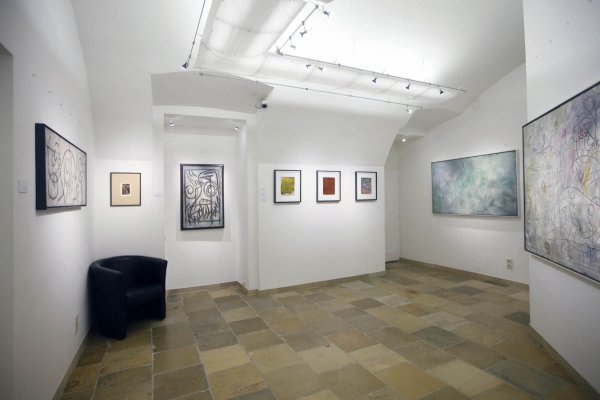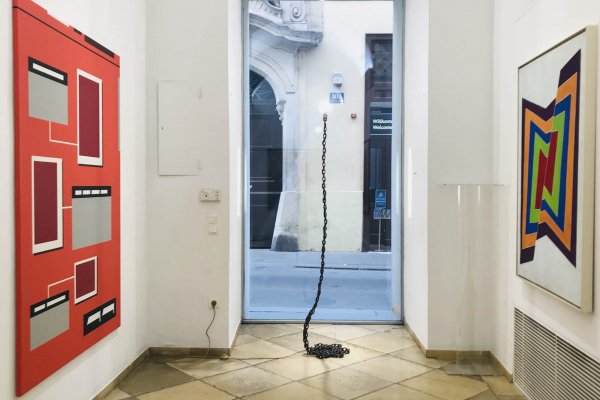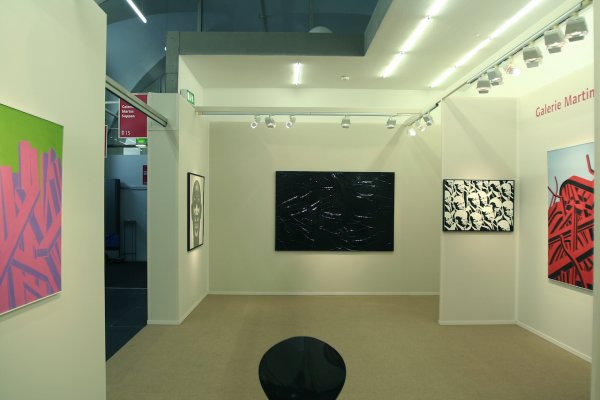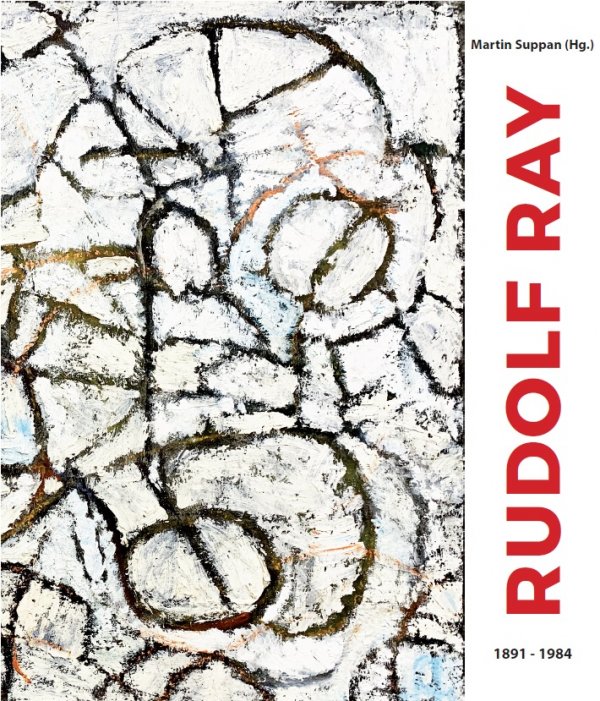Rudolf Ray (1891 - 1984)
On the occasion of the first Vienna exhibition of Rudolf Ray in 1934, Oskar Kokoschka paid tribute to his painter colleague while looking at his expressive, psychological-figurative portraits with the words: "Rudolf Ray is a pure expressionist" and announced his art as a "revolution" . Since the beginning of his artistic career, it has been a particular concern of the artist to penetrate into the essence of what is depicted. At the same time he was very attracted to Indian philosophy, which is why he has been touring various regions of India since the early 1920s. In 1937 he exhibited several times in Paris, but in the following year, as a Jew, due to the threatened political situation of the National Socialists, he was forced to first immigrate to France until he finally went to New York in 1942. He met Marcel Duchamp on the refugee ship. In 1944 Ray had a solo exhibition in Peggy Guggenheim's gallery "Art of this Century" with his new abstract paintings. The US-American art critic Clement Greenberg called Ray in 1948 in one sentence with Mark Tobey or Jackson Pollock when he described the departure of contemporary artists from traditional panel painting to "all over" during the crisis of the easel painting.
The international art critic Sir Herbert Read referred in particular to the works of Ray and their starting point in Vienna from Freud and Kokoschka: "... they are symbols of an inner or subjective reality" . In Austria it was the job of the City Councillor for Culture and Art, Viktor Matejkas, to bring back exiled artists like Rudolf Ray or Oskar Kokoschka to Austria. In 1955 Ray had a solo exhibition at the Willard Gallery in New York and was invited to participate in the annual Contemporary American Painting exhibition at the Whitney Museum that same year. Among the exhibiting artists were Josef Albers, William Baziotes, Franz Kline, Joan Mitchell, Ad Reinhardt and Marc Tobey. Between 1956 and 1959 Ray lived again in India and presented current works in two major exhibitions, 1956 in Bombay and 1959 in New Delhi. In 1960, Ray initially wanted to move from New York to Mexico for two years, but stayed there until 1974. A comprehensive exhibition of his later works took place in 1963 at the Grand Central Moderns Gallery in New York. The artist himself described the works exhibited there as transcendental paintings: "What is left last - the characters, codes, complicated lines and coordinated hues - is in truth the result of a process of weeks or months of abstraction" .
The Wiener Secession honoured Rudolf Ray with an exhibition in 1970 after the unexpected, initiated by Viktor Matejka for 1956, had to be cancelled due to the Hungarian uprising.
Works by the artist are in the collections of the Albertina Museum Vienna, the MUMOK, Vienna, the Metropolitan Museum of Art, New York, and the Tel Aviv Museum. and in numerous private collections in the USA, Israel and Europe.
Works
-

RUDOLF RAY
Mimi, 1979
Oil on canvas
66 x 69 cm -

RUDOLF RAY
RITA, 1979
Oil on cardboard
92 x 120 cm -

RUDOLF RAY
untitled, around 1978
Oil on wood
47,4 x 56,3 cm -

RUDOLF RAY
untitled, 1976
Oil on wood
78,8 x 107,3 cm -

RUDOLF RAY
Tichitschuan Mexico, 1972
Oil on canvas
132 x 102 cm -

RUDOLF RAY
Nauhtue, 1972
Oil on wood
79,7 x 145,2 cm -

RUDOLF RAY
untitled, around 1970
Oil on plywood panel
61 x 122 cm -

RUDOLF RAY
Joyce, 1969
Oil on canvas
122 x 205 cm -

RUDOLF RAY
Tepotzlan, 1968/69
Oil on canvas on wood
97 x 60 cm -

RUDOLF RAY
Night of wedding, 1968
Oil on canvas
92 x 122 cm -

RUDOLF RAY
untitled, around 1965
Oil on plywood panel
61 x 122 cm -

RUDOLF RAY
Flower and Sky, 1962
Oil on wood
36,5 x 44,5 cm -

RUDOLF RAY
untitled, 1961
Oil on plywood panel
60 x 122 cm -

RUDOLF RAY
Tlaloc, God of Rain, aound 1960
Oil on canvas
61 x 122,4 cm -

RUDOLF RAY
Guru, 1959
Oil on wood
28 x 35 cm -

RUDOLF RAY
Journey from Within, 1959
Oil on wood
33 x 44,5 cm -

RUDOLF RAY
Guru, 1958
Oil on cardboard
22,5 x 30,4 cm -

RUDOLF RAY
untitled, around 1957
Oil on cardboard
50,8 x 39,5 cm -

RUDOLF RAY
untitled, around 1956
Oil on plywood panel
78,5 x 106,5 cm -

RUDOLF RAY
Joyce, 1950
Oil on cardboard
112 x 85,4 cm -

RUDOLF RAY
Portrait of Dr. Assia, 1949
Oil on wood
47 x 60,5 cm -

RUDOLF RAY
42nd Strret, NY, 1946
Oil on canvas
101,7 x 96,5 cm -

RUDOLF RAY
Fuge, 1944
Oil on canvas
126,5 x 115,5 cm -

RUDOLF RAY
Portrait, 1934
Chalk, pastel on board
59 x 43,7 cm




